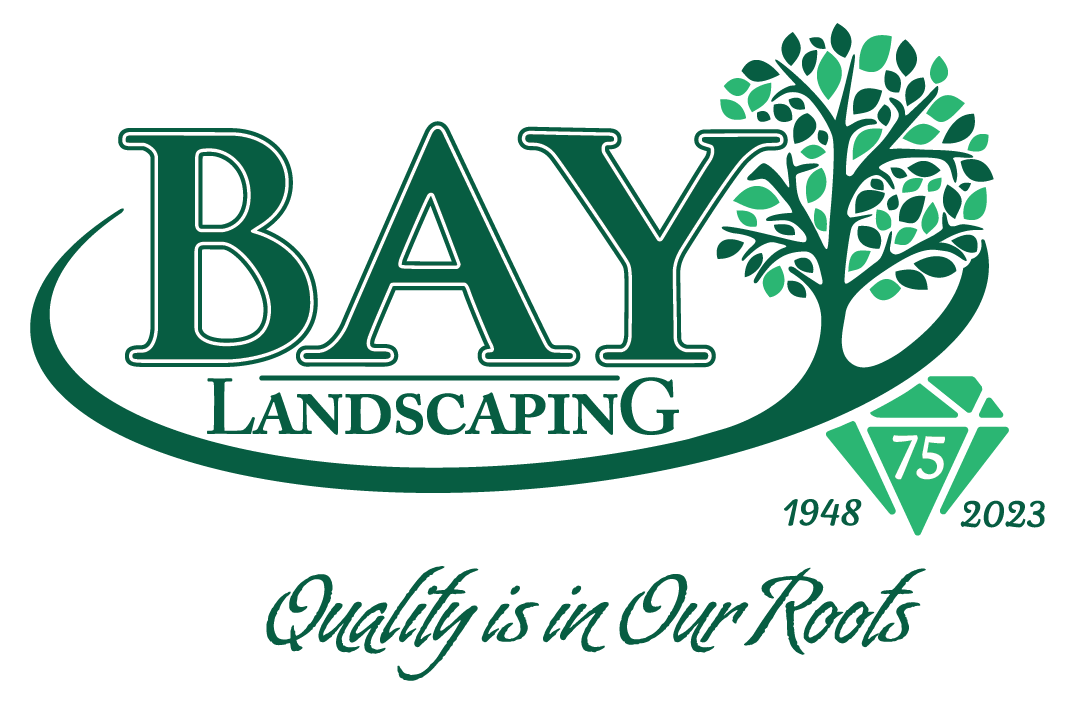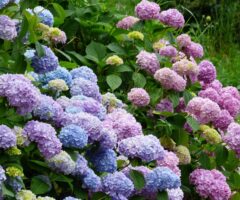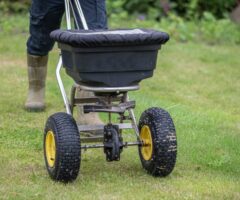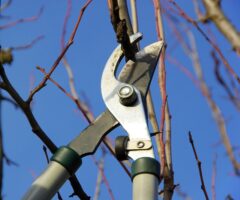We hear it all the time: “I just want something low-maintenance.” Between work, family, and everything else that fills your schedule, you don’t want your yard to become one more thing you have to manage.
The idea of a landscape that practically takes care of itself sounds great. But even the most thoughtfully designed spaces need some level of ongoing care. Plants grow, weeds show up, the weather shifts, and if no one’s paying attention, things get messy fast.
Lower maintenance is possible. But truly no maintenance? That’s a myth.
Key Takeaways:
- There’s no such thing as a maintenance-free landscape or garden – only one that’s thoughtfully designed to need less.
- Most low-maintenance ideas like weed fabric, stone beds, and no-mow mixes create more work in the long run.
- Even tough, drought-tolerant and native plants still need water, pruning, and seasonal care to stay healthy.
- Mulch is temporary – the long-term goal is to fill beds with plants that shade out weeds and take over the work.
- A truly manageable yard starts with smart planning: healthy soil, right plant placement, and efficient watering systems.

Where the Low-Maintenance Myth Really Comes From
A lot of the confusion around low-maintenance landscaping and gardening comes from how it’s sold.
TV shows, Pinterest boards, home improvement blogs and magazines love to make it look easy. Toss in a few drought-tolerant plants, spread some mulch or stone, and you’ve got something fast, simple, and supposedly effortless.
But most of those ideas are built for visual appeal, not for the long haul. What gets left out is everything that happens after the camera pans away: the weeding, watering, pruning, and troubleshooting that real homeowners have to deal with.
The Real Cost of “Maintenance-Free”
Most of the time, “maintenance-free” just means cutting corners and that almost always leads to more maintenance, not less. When you look at how these landscapes actually hold up over time, they’re rarely as simple (or successful) as they sound.
Drought-Tolerant Doesn’t Mean No Watering
These plants are a smart choice, especially in Michigan summers, but they’re not magic. Just because a plant can handle dry conditions doesn’t mean it thrives without water. Especially early on, new plantings need consistent monitoring and watering to get established. Any plant that has gone a couple of weeks without water can start to show stress. Drought-tolerant doesn’t mean hands-off – it just gives you a little more wiggle room in between waterings.
Mulch Breaks Down – and Brings Weeds with It
Mulch helps retain moisture, keeps soil temperatures stable, and helps suppress weeds – but it’s not a permanent fix. Over time, mulch naturally breaks down and turns into compost. When there’s weed fabric underneath, that compost builds up on top of the fabric, creating an ideal surface for weeds to take root.
Instead of stopping weeds, you’ve just made them harder to deal with and added a layer of plastic that gets in the way when it’s time to replant or refresh the bed.
Stone Beds Are Hot, Expensive, and Eventually Get Weeds Anyway
Dirt and debris blow into stone just like they do into mulch bed – and weeds grow there, too. On top of that, stone can trap heat and stress your plants. It’s expensive to install, hard to work with, and even harder to remove later. Most plants would never choose to grow in a bed of rocks.
Native Plants Still Need Pruning and Care
Native plants are a smart choice. They’re adapted to our climate, they support local wildlife, and they typically need less water once they’re established. But that doesn’t mean they take care of themselves. They still need seasonal cleanup, occasional pruning, and some attention to spacing and spread.
That’s why we talk about the importance of pruning so often, it’s only once a year and only minutes a year per plant (look for our free pruning classes from time to time to help with lower maintenance)!
We use natives all the time in our designs, but we also plan for the maintenance that comes with them. Low effort doesn’t mean no effort, even with the right plants.
No-Mow Doesn’t Mean No Work
Switching from lawn to a no-mow mix cuts down on mowing, but it doesn’t entirely eliminate work. These areas still need seasonal cutbacks, edging, and regular checks for weeds and invasive plants. If you don’t stay on top of it, that soft natural look starts to veer into overgrown territory fast.
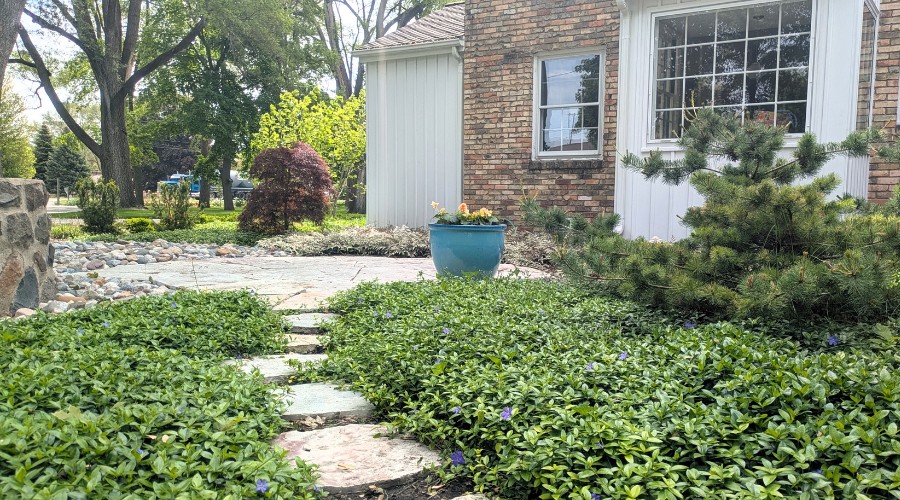
What Lower Maintenance Actually Looks Like
If you want a yard that’s easier to manage, it has to be planned that way from the start. Here’s what we focus on when designing lower-maintenance gardens and landscapes:
- Plant with Purpose: Choose plants that match the light, soil, and moisture conditions of the site. When plants are in the right place, they establish faster and need less watering or extra care.
- Start with Healthy Soil: Good soil sets everything up for success. It supports healthy roots, improves water retention, and makes plants more resilient – which means fewer problems later.
- Use Efficient Watering Systems: Drip irrigation systems help save you time, reduce waste, and make sure water goes where it’s needed most – at the roots.
- Design for Maturity: We space and layer plants based on how they’ll grow and how they’ll be maintained, not just how they look right after installation. That prevents overcrowding, constant replanting, and unnecessary maintenance down the road.
- Let Plants Replace Mulch: Mulch is useful early on, but it’s not a long-term solution. It breaks down every year and needs to be replaced. The better option is to fill the space with plants (like pachysandra, myrtle, liriope, carex, sedum, black-eyed Susan, daylily, and Hosta) and let them grow in until they touch. When you do that, they’ll shade out weeds naturally – and you can stop relying on mulch altogether.
Skip the Trends and False Promises – Design a Landscape That Lasts with Bay Landscaping
Creating a yard or garden that feels like a retreat doesn’t happen in a weekend. And it doesn’t come from chasing low-maintenance promises that don’t live up to the hype. It takes thoughtful design, smart planning, and a little ongoing care.
At Bay Landscaping, we don’t do cookie-cutter installs or quick fixes. We create lasting solutions tailored to your property, your goals, and the way you actually use your space. No shortcuts, no trendy gimmicks, just landscapes that hold up (and look good doing it).
Ready for something that works long-term? Let’s design a landscape that fits your life. Call us today at 989-893-0000 to get started.
